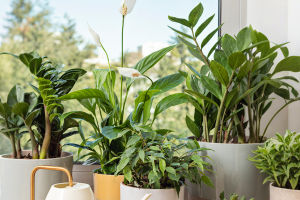When we think of flowers, we often picture bright, colorful petals on big plants. But have you ever noticed tiny green plants growing quietly on damp rocks, soil, or tree bark?
Those are liverworts, and while they don't have typical flowers like roses or lilies, they have unique reproductive structures often called "liverwort flowers." Today, we'll dive into what makes these little wonders so fascinating.
What Exactly Are Liverworts?
Liverworts are small, non-vascular plants, meaning they don't have the tubes that carry water like most plants do. They usually grow in moist, shady places such as forest floors, stream edges, or even urban parks. Their name comes from their liver-shaped leaves, which reminded early botanists of the human liver. Although liverworts look simple, they play an important role in ecosystems by helping keep soil moist and providing habitats for tiny creatures.
The Unique "Flowers" of Liverworts
Unlike flowering plants, liverworts don't produce true flowers or seeds. Instead, they reproduce with special structures called gametangia, often grouped in complex formations that can look like tiny flowers or umbrellas. These structures produce reproductive cells to create new plants. Some liverworts also reproduce asexually using small blobs called gemmae, which can grow into new plants. This combination allows them to survive and spread even in challenging environments.
How Liverworts Reproduce
We often find liverwort reproduction fascinating because it depends on water. When it rains or there's dew, male cells from the gametangia swim through the water to reach the female eggs. After fertilization, a new sporophyte grows, producing spores that can travel and grow into new liverworts. This process is slow and delicate but effective for these tiny plants. It's nature's quiet way of renewing life in damp places.
Why Do Liverworts Matter to Us?
Even though they are small and easy to overlook, liverworts are vital for healthy ecosystems. They help prevent soil erosion by covering bare ground and keeping moisture locked in. Many tiny animals, like insects and microscopic creatures, depend on liverworts for food and shelter. Plus, scientists study liverworts to understand how plants evolved to live on land since liverworts are among the earliest land plants on Earth.
Spotting Liverworts and Their "Flowers" in the Wild
If you want to see liverworts yourself, look for damp, shaded spots in forests or gardens. The plants often form green mats or tiny lobed leaves on rocks and soil. Their reproductive structures might look like tiny cups, umbrellas, or little umbrellas standing on thin stalks. With a magnifying glass, you can discover their delicate beauty up close.
Let's Appreciate These Tiny Wonders
We hope learning about liverwort flowers makes us all more curious about the small but incredible parts of nature that often go unnoticed. Next time you wander in the woods or near a stream, take a closer look down at the ground — you might just find these amazing little plants quietly thriving and helping the world around them.
We'd love to hear if you've spotted liverworts before or if you have questions about these unique plants. Share your stories or thoughts with us — let's celebrate nature's tiny miracles together!


